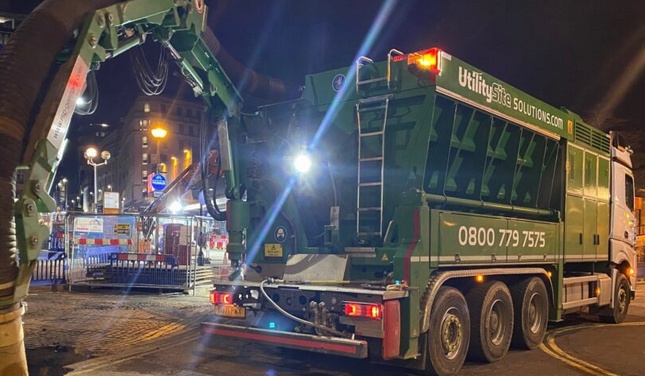Introduction
Excavation is a fundamental process in construction and infrastructure development, but traditional methods often come with challenges such as soil displacement, utility damage, and operational inefficiencies. The emergence of suction excavation has brought a paradigm shift to the industry, offering a powerful and precise alternative. This article explores the key aspects of suction excavation, its applications, benefits, and the transformative impact it has on various sectors.
The Need for Precision in Excavation
Excavation is a cornerstone of construction projects, utility installations, and infrastructure development. Traditional methods, such as manual digging or mechanical excavation, often pose risks and limitations. Soil displacement, potential damage to existing utilities, and the time-consuming nature of these methods have spurred the need for a more precise and efficient approach.
Enter Suction Excavation
Suction excavation, also known as vacuum excavation or hydro excavation, has emerged as a revolutionary technique in the field of excavation. This method involves the use of a powerful vacuum system to break up and remove soil, while simultaneously providing precise control and minimizing the risk of damage to underground utilities.
Key Components and Operation
Suction excavation systems consist of a vacuum unit, a debris tank, and a high-pressure water system. The process begins with the high-pressure water jetting system breaking up the soil and turning it into slurry. The vacuum unit then efficiently extracts the slurry into the debris tank. This combination of water pressure and vacuum power allows for the excavation of soil with unparalleled precision.
The operator has real-time control over the excavation process, ensuring that only the necessary soil is removed without disturbing surrounding areas. This level of precision is especially crucial in urban environments where underground utilities are densely packed, and any damage can have significant consequences.
Applications Across Industries
The versatility of suction excavation renders it applicable across various industries. From construction sites to utility maintenance, this technique has proven its efficacy in numerous scenarios.
-
Construction Industry: Suction excavation is widely used in construction projects for tasks such as potholing, trenching, and foundation excavation. The precision of this method minimizes the risk of compromising the structural integrity of nearby buildings or existing infrastructure.
-
Utility Installation and Maintenance: When installing or repairing utilities such as water, gas, or telecommunication lines, avoiding damage to existing services is paramount. Suction excavation allows for safe and precise excavation around these utilities, reducing the likelihood of costly and disruptive accidents.
-
Landscaping and Arboriculture: Suction excavation is gaining popularity in landscaping and arboriculture for tasks like tree root exposure and planting hole excavation. The ability to precisely excavate without causing damage to tree roots or surrounding vegetation is a significant advantage.
-
Environmental Remediation: In environmental cleanup efforts, suction excavation proves beneficial for the removal of contaminated soil. The controlled and efficient nature of the process minimizes the spread of pollutants and accelerates the remediation process.
Benefits of Suction Excavation
The adoption of suction excavation brings forth a multitude of benefits, contributing to its increasing popularity in various industries.
-
Precision and Safety: Suction excavation allows for surgical precision in digging, minimizing the risk of damage to underground utilities or surrounding structures. This enhances overall safety on the worksite.
-
Reduced Environmental Impact: Traditional excavation methods often result in soil displacement and disturbance to the ecosystem. Suction excavation minimizes these environmental impacts by precisely extracting only the necessary soil, leaving surrounding areas undisturbed.
-
Time and Cost Efficiency: The efficiency of suction excavation translates to time and cost savings. The controlled process reduces the need for extensive manual labor and minimizes the downtime associated with traditional excavation methods.
-
Minimized Disruption in Urban Areas: In densely populated urban areas, minimizing disruption is crucial. Suction excavation enables non-intrusive digging, making it ideal for projects in city centers or areas with complex underground infrastructure.
Challenges and Future Developments
While suction excavation offers a host of benefits, challenges still exist. The initial investment in specialized equipment may be a barrier for some smaller entities. Moreover, continuous training of operators is essential to ensure the proper and safe use of suction excavation systems.
Looking ahead, ongoing developments in technology may bring about further improvements in suction excavation systems. Enhanced sensors, automation, and data analytics are areas where advancements can lead to even greater precision and efficiency in the excavation process.
Conclusion
In conclusion, suction excavation stands as a powerful and precise alternative to traditional excavation methods. Its applications across various industries, coupled with benefits such as increased safety, reduced environmental impact, and time efficiency, make it a transformative force in the realm of excavation. As industries continue to prioritize precision and sustainability, the adoption of suction excavation is likely to become more widespread, shaping the future of excavation practices and contributing to safer, more efficient, and environmentally conscious construction and infrastructure development.


No comments yet